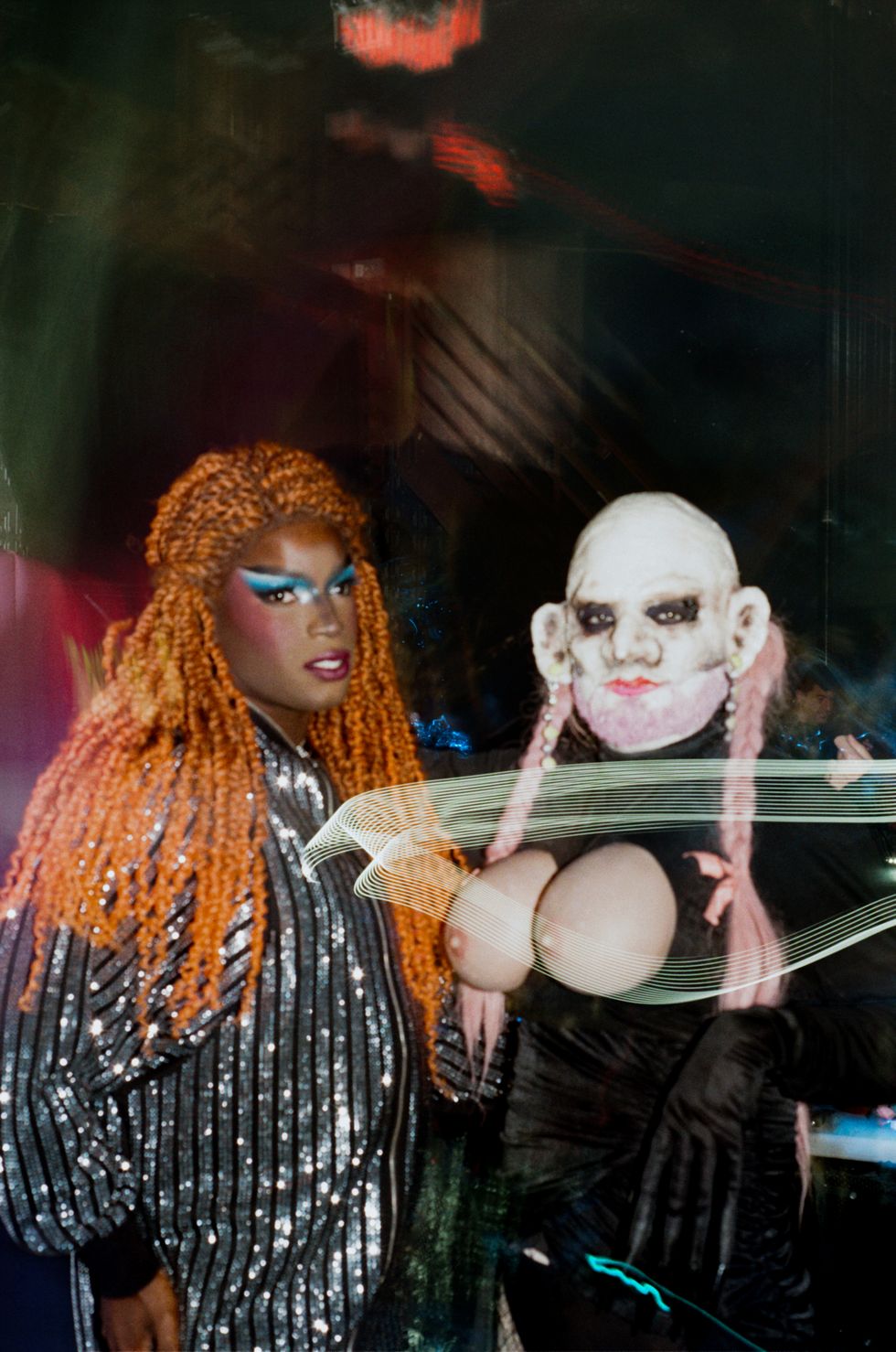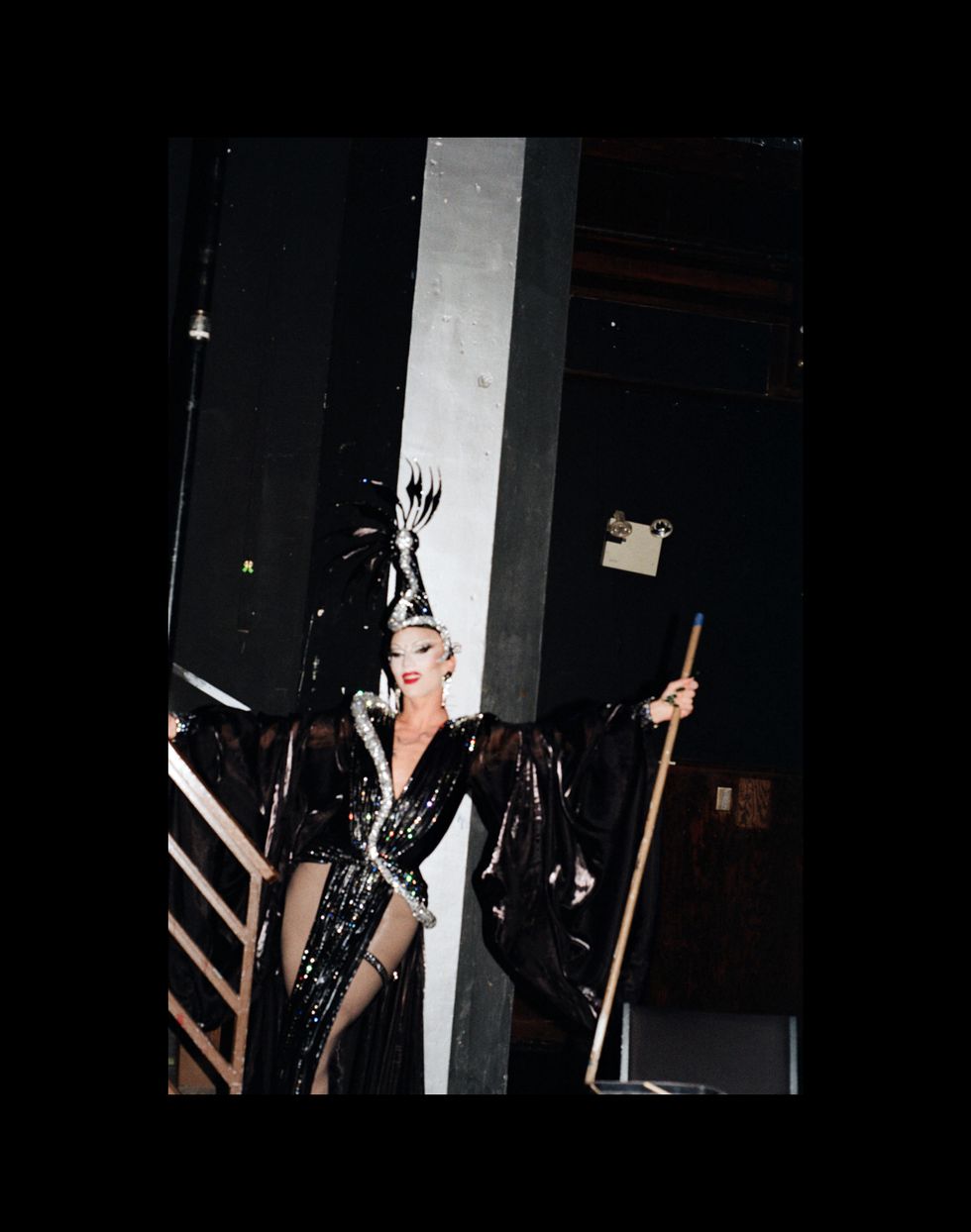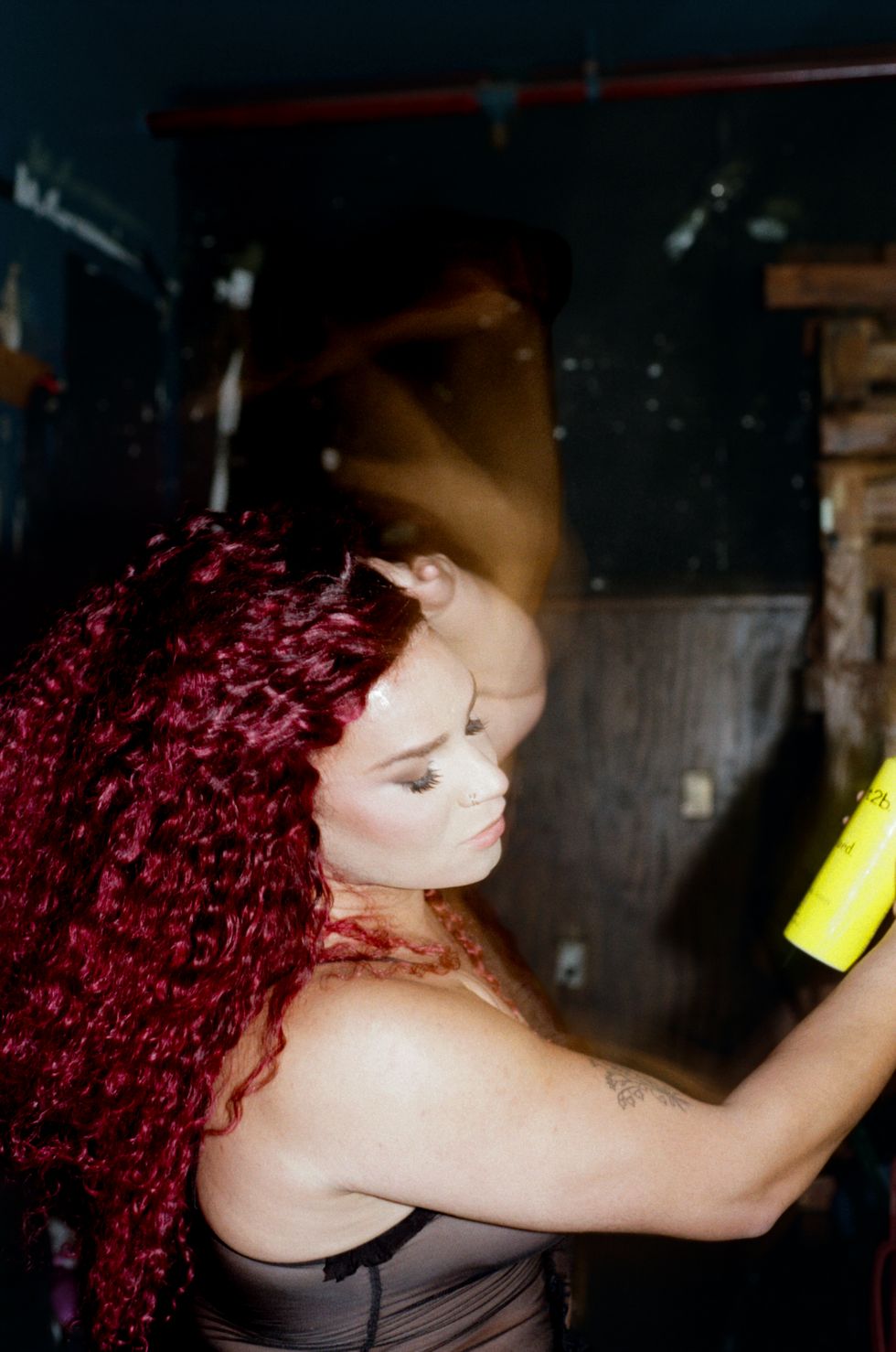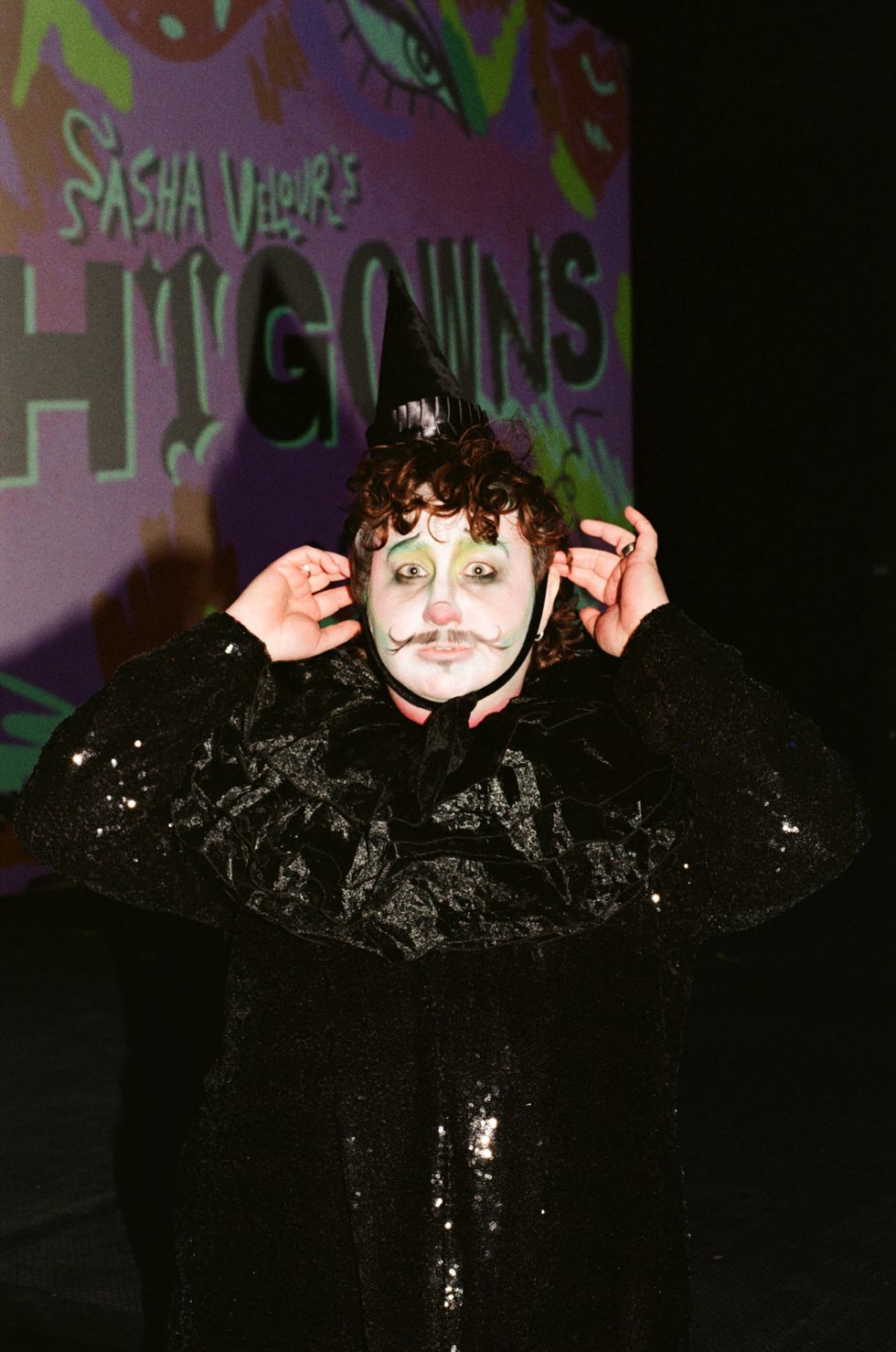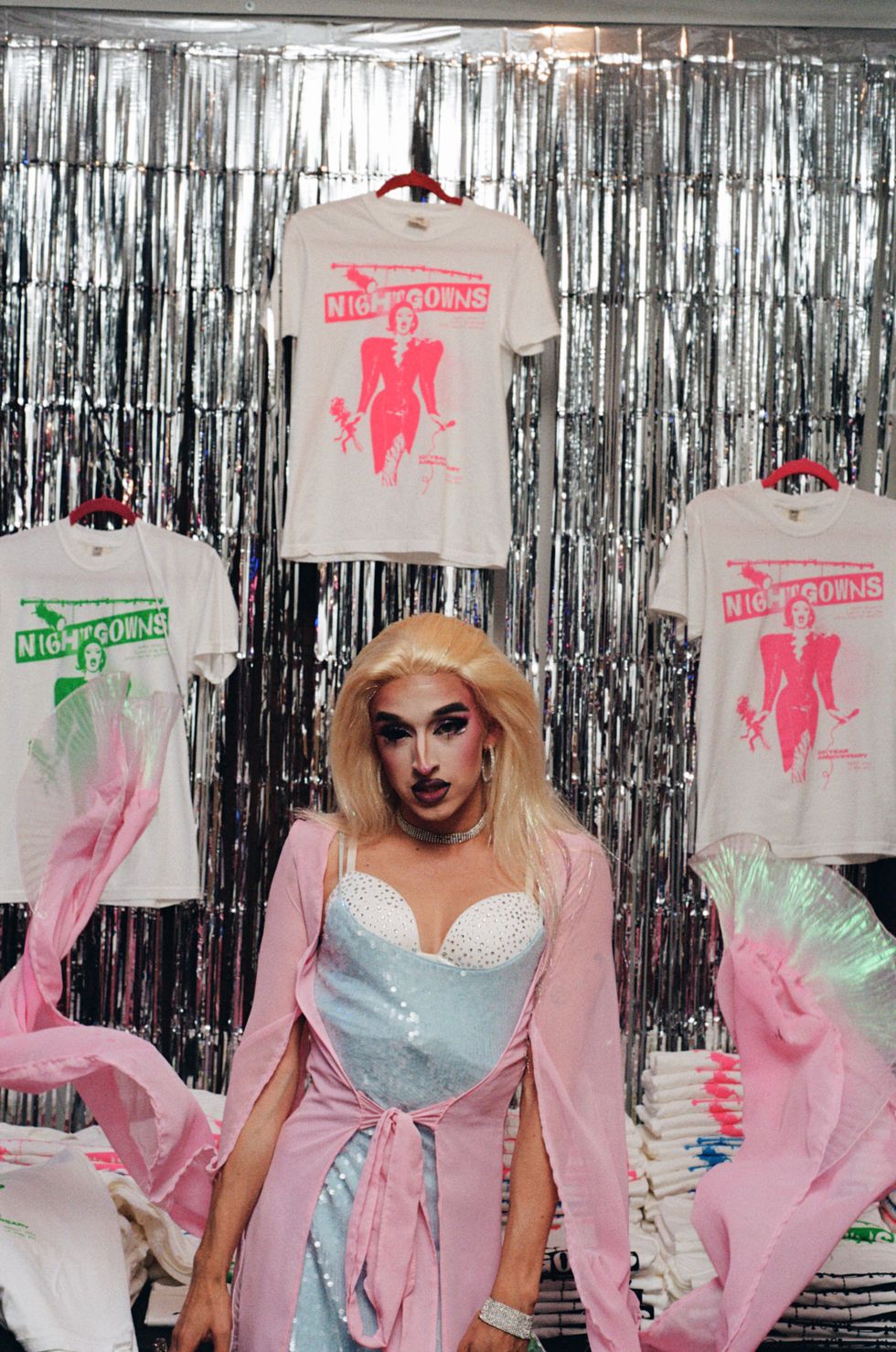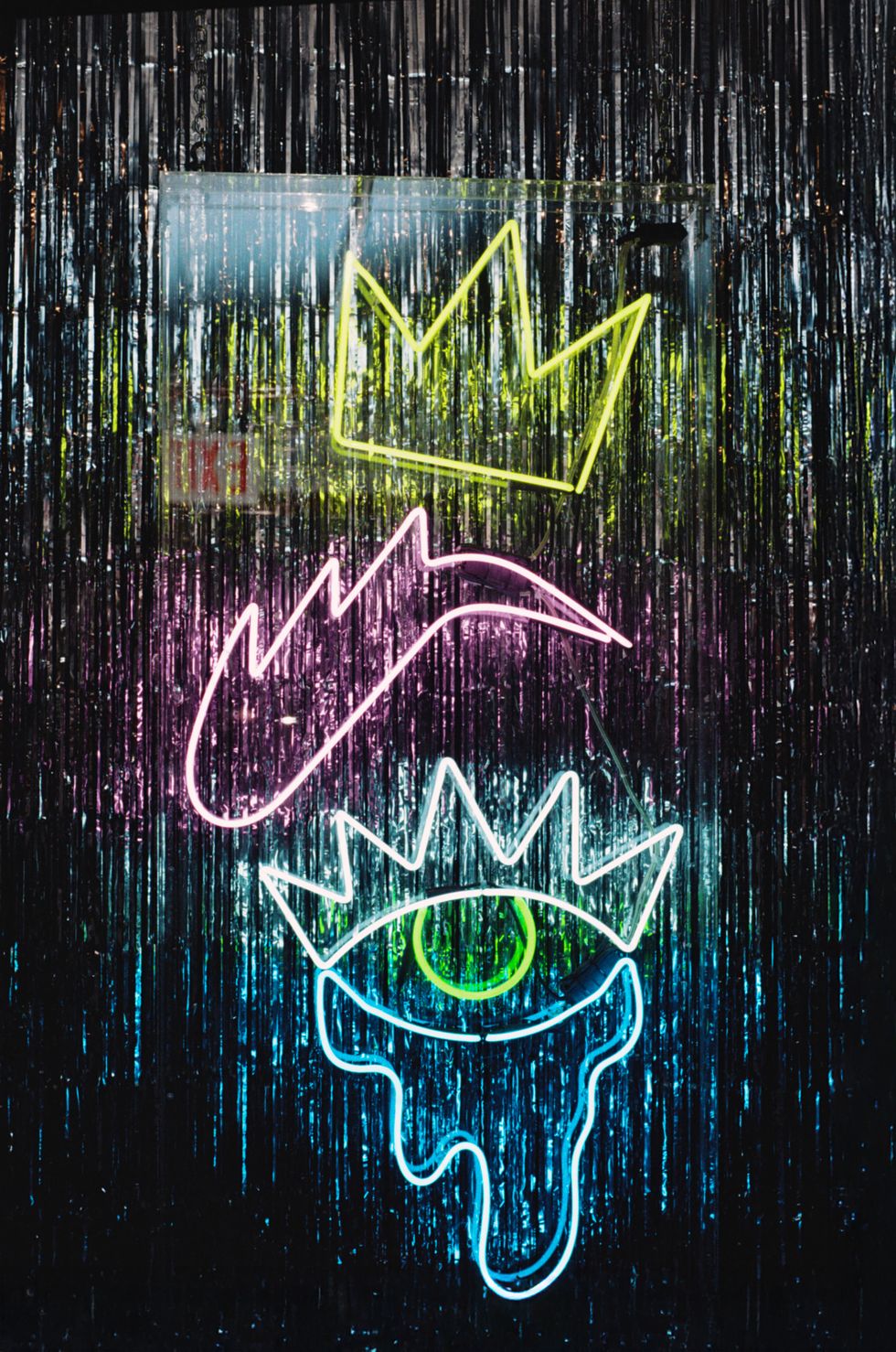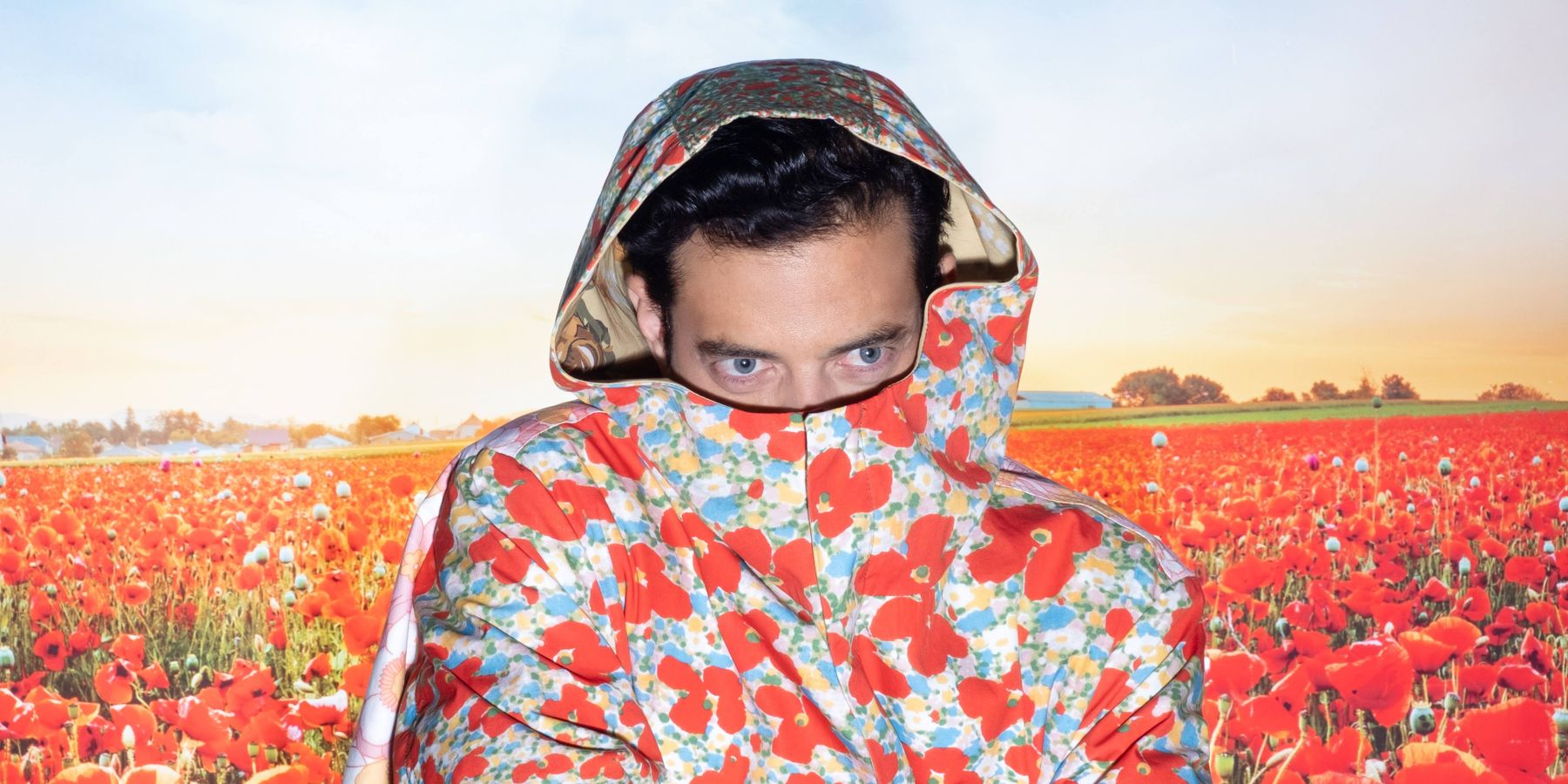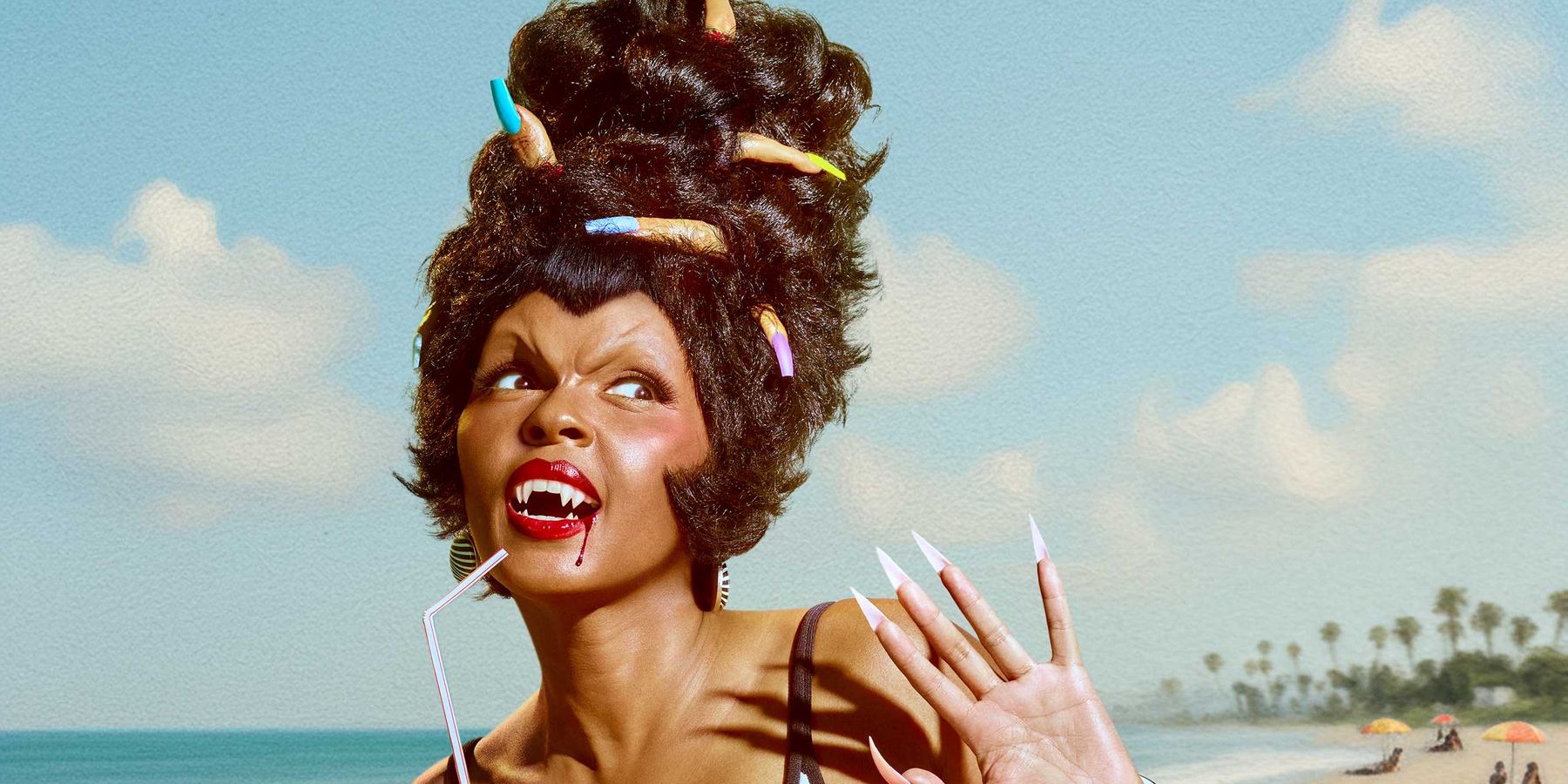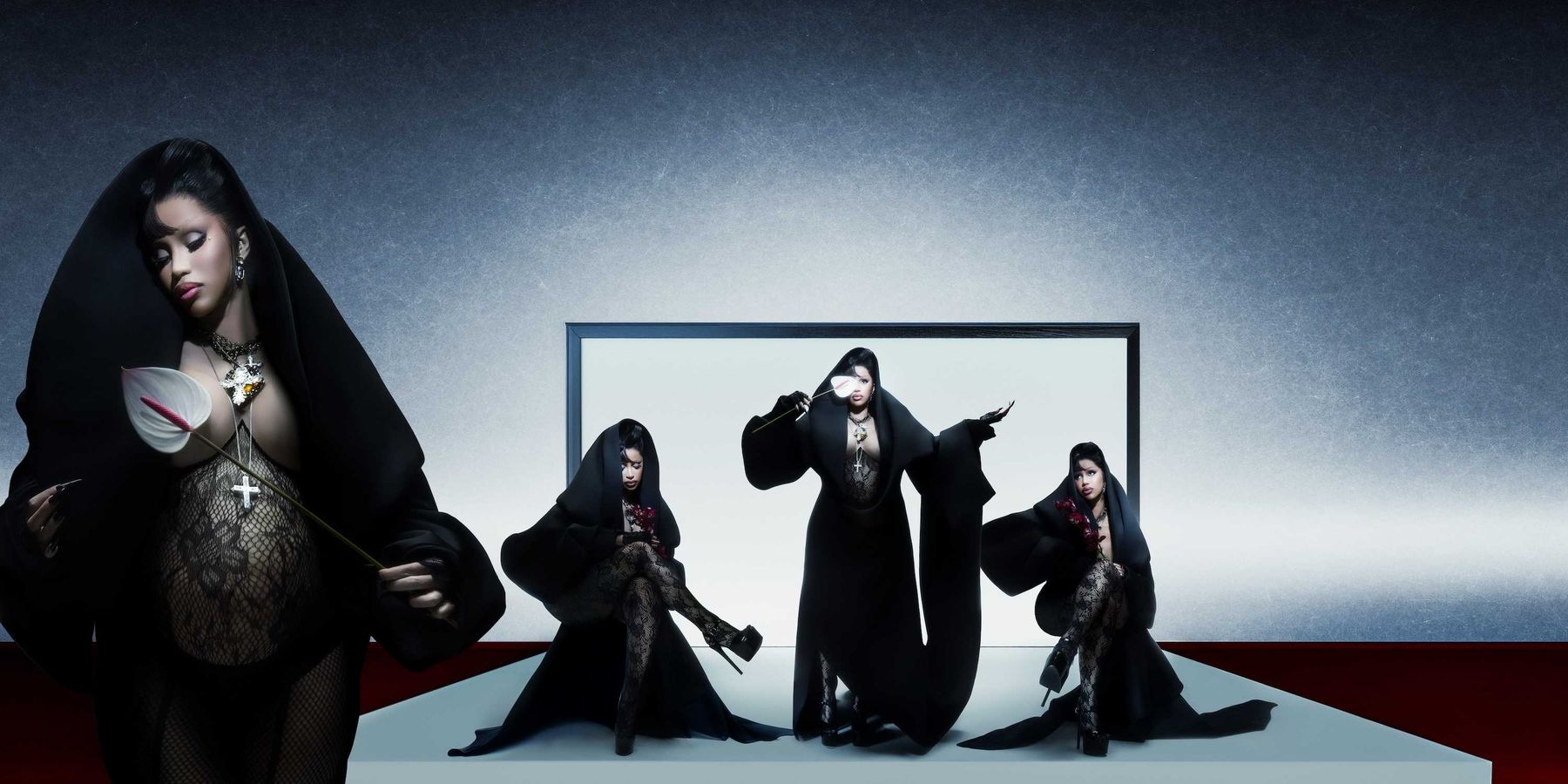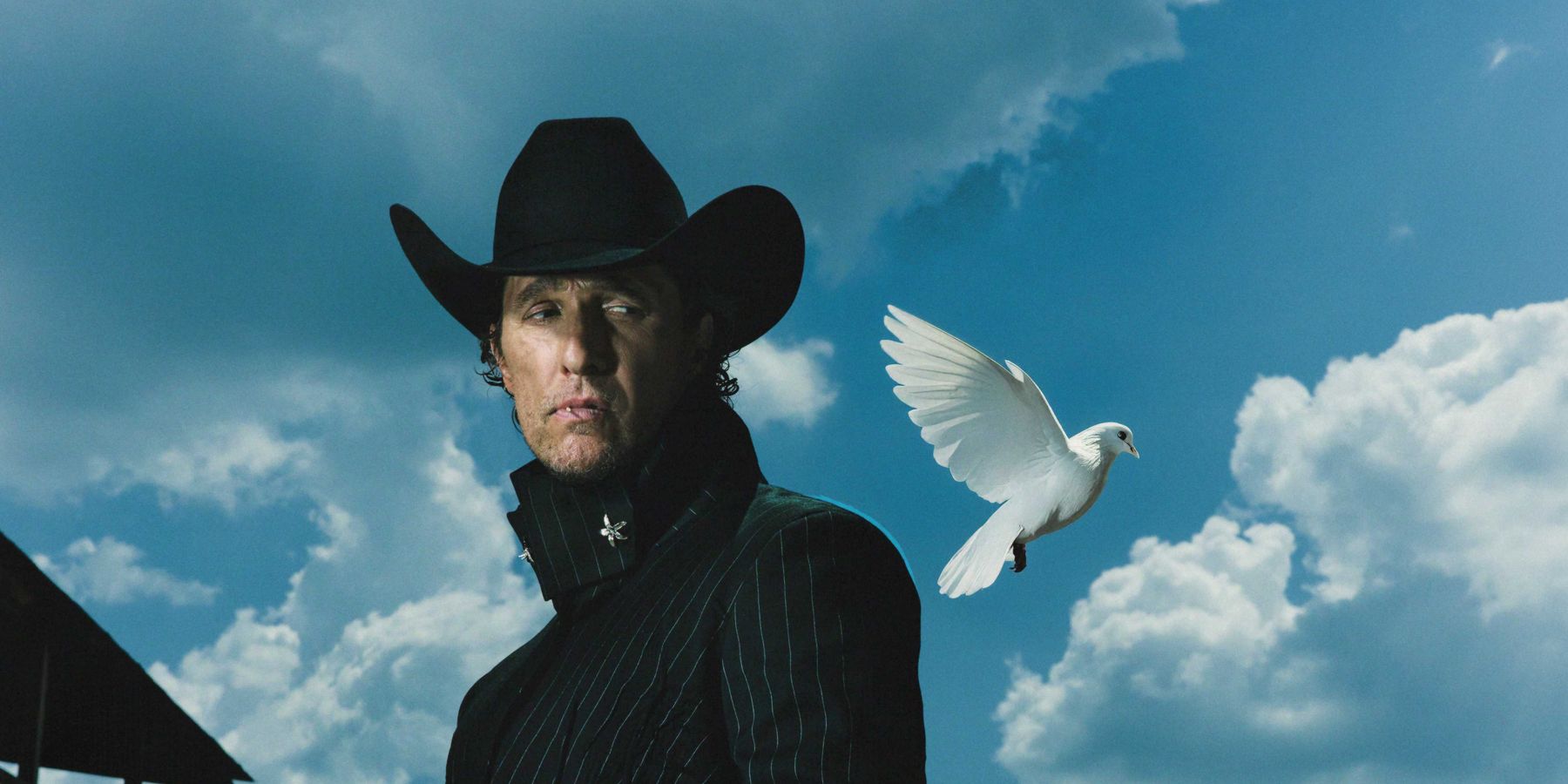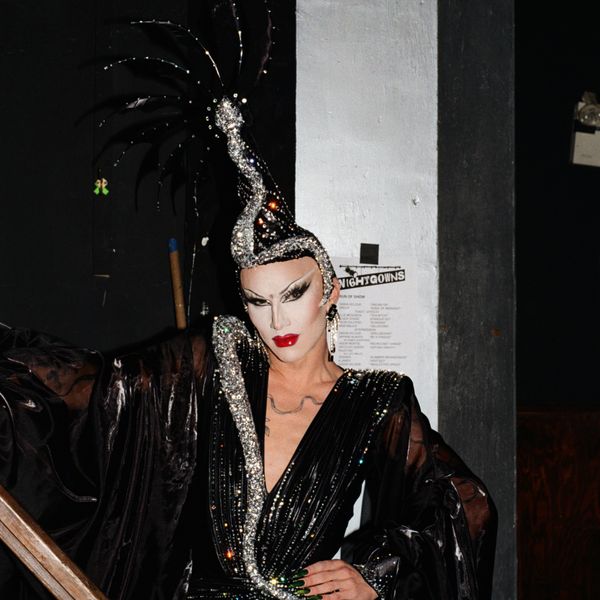
Sasha Velour Knows That ‘NightGowns’ Is Forever
By Joan Summers
Sep 04, 2025Sasha Velour is no stranger to self mythologizing.
When asked about the legacy of her groundbreaking drag extravaganza NightGowns, and the high esteem other drag performers hold her and the show in, she laughs. "I always say, the reason Stonewall became the revolutionary event is because as soon as it was over, the girls were like, 'We just made history. Sweetie, what we did last night, we changed the trajectory of gay rights.'"
She'd describe NightGowns as such, in her own way. "At the first NightGowns, I was like, 'Drag has never been respected as an art form the way it will be tonight, sweetie.'" I'd say the last ten years have proven that an accurate estimation.
I find her mere days before the start of the show's 10th anniversary shows at La Mama, in Manhattan. Across New York City, performers from Brooklyn standout Zenobia to drag king trailblazer K. James and even the worldwide phenomenon Sasha Colby are gearing up for the run. The floor is littered in drag droppings from a run of shows in Brazil and already she's pivoted to rehearsals and planning for the upcoming celebration. "So many spaces have closed that were crucial to drag, there’s so many shows that don’t last but still have a huge impact. So to still be going after 10 years feels major for us." It's a longevity she doesn't take lightly, seeing as NightGowns progenitor venue Bizarre Bushwick closed in 2019.
She didn't always know that sparsely attended show in 2015 — "I was relieved that more people hadn’t been there!" — would grow into the sprawling theatrical drag revue it is today, but she certainly treated it like it was from the start. "My knowledge of how to achieve that has grown, but I felt like, even when it was a cardboard box stage with three lights, I was very serious about it."
Back on the self mythologizing, she downplays the impact her show has had on the wider drag landscape, if only with a wink. "To any extent that it’s true, I have just not given up this dream of what NightGowns can be, or compromised it." It wasn't always easy, she says. But a drag queen endures; a drag queen survives. "There was a moment where I was never making money from NightGowns, and it was hard and stressful, and it would have been easier to stop. I was like, no, this is too important to me. I feel like the impact of what this show could be is still a little out of reach, and I want to keep going."
Looking back on the last ten years, and towards a rapidly changing future, she hopes most of all for survival, and the ability to make great art; perversely, she hopes as much to make bad art. "Wouldn’t it be great if drag, and queer people, were so accepted in the mainstream that we would have to really go out of our way to do something radical with NightGowns? Just showing up seems radical enough, and we’ll be there."
Read the rest of our sprawling conversation Sasha Velour below. Someday, it might even be myth.
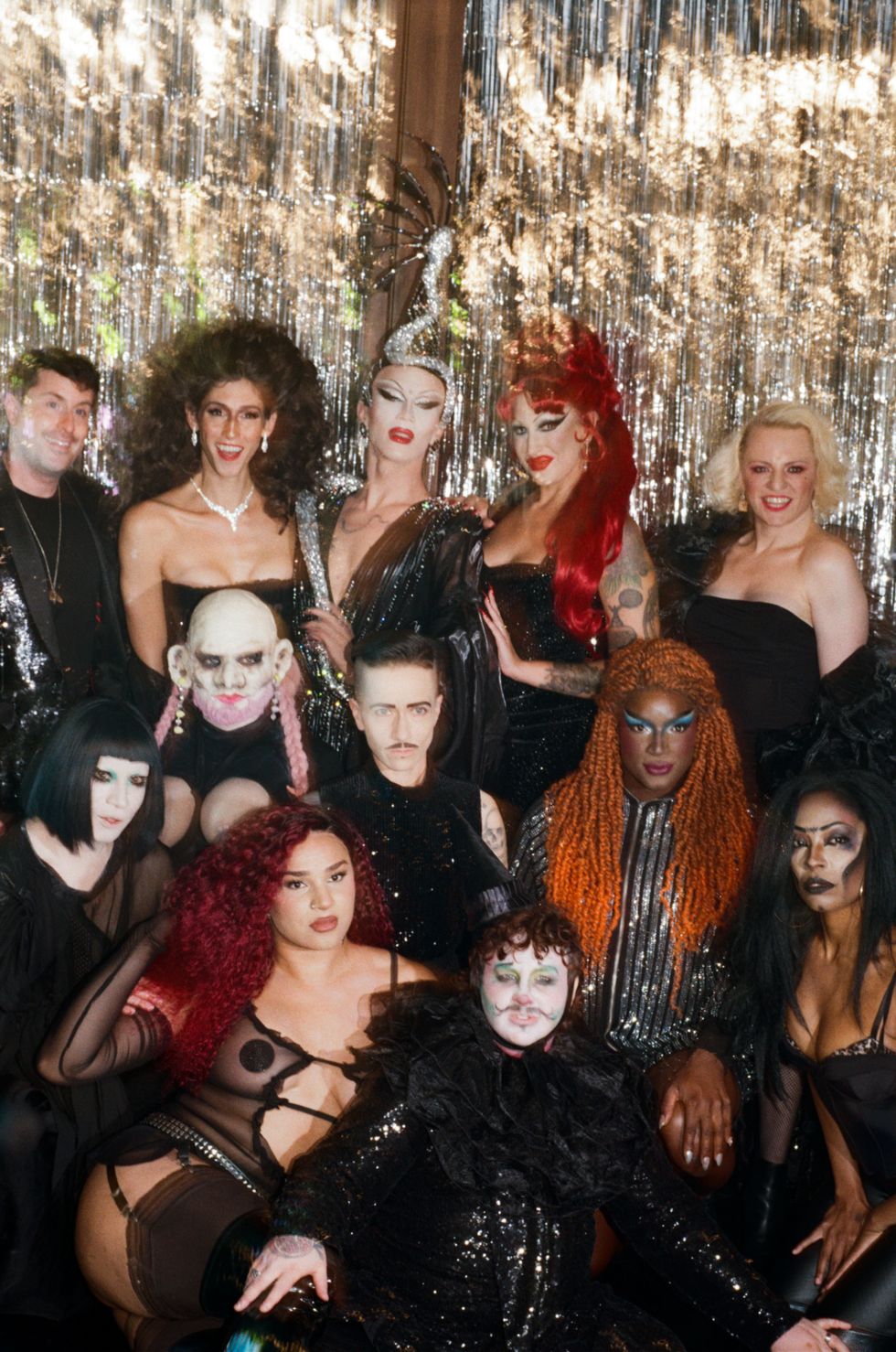
I have to say, quickly, that I never knew you were born in Berkeley. I never meet anyone from there in this field, from the Bay Area! Shoutout to a Berkeley diva!
You were born in Berkeley?
San Jose, but my grandma is from Berkeley. When I moved there briefly after college, she came to visit me, and was like, “I was born in that apartment building next door!” It floored me, I had no idea.
Oh amazing, I love that.
You just did The Big Reveal there earlier this year. What was it like, going back to the bay and putting on such a big show for so long?
It was so fun. These cousins, people related to my grandma that I have never met, came to see the show, and her Rabbi's wife showed up, and they were always a very radical temple. So I don't think they're surprised to see that I'm dressing in drag and saying all the things that I'm saying on stage. But it was really sweet because so much of that show, partly because the book was written right in this time where there was so much fear around exposing drag to young people, I wrote about my experiences learning about drag from my grandma when I was a little kid. It was set in this set, in the Bay Area, with these people who spent their lives there. It was nice to pay tribute. I felt like the spirits, the ancestors. were with me.
I'm lucky to come from a family that was always concerned about how I was going to fit into the world, but comfortable with the fact that I wanted to dress in gowns and put makeup on and hold a purse. A lot of them are gone, so getting to do this show feels like a seance; I'm bringing the ancestors back and celebrating all the things that they gave me, the gifts.
Speaking of full circle moments, you're getting ready for the 10th anniversary of NightGowns. How are you feeling ahead of it, and congrats on a decade of drag!
So many spaces have closed that were crucial to drag, there’s so many shows that don’t last but still have a huge impact. So to still be going after 10 years feels major for us. I’m excited. I think 10 years in, I finally figured out how to do a drag show, and it’s relaxing and enjoyable now. We still freak out, of course, but I feel like I’m finally present and enjoying the show and not worried about how to do it. So that’s an achievement.
Where did the name NightGowns come from? I’ve always found it such an evocative name for a drag show; it’s simple and it says so much.
My first acts of radical cross dressing were all with nightgowns, because for some reason, my family really liked wearing the same night costume to go to bed. My dad was in a dress, I was in a dress, and they didn’t intend for me to put a belt around it and a chunky bangle and put a turban on. When I was alone in my room, that really made the night dress great. So I already had a positive association with nightgowns. It’s permissible drag and little trans experimentation as a kid.
There’s also this amazing book by a cartoon artist called Edie Fake that came out a year before NightGowns started, that was all of these tributes to lost Chicago queer spaces. And it’s just these beautiful illustrations of the front of the building. There was one that was called NightGowns, and I think some of them are fictional, some are real. I actually don’t know if there was ever a real space in Chicago called NightGowns, I have to message Edie about it now. Who knows! This is so drag: is it an urban legend or a real place? But drag is just that, it’s a collage of truth, it becomes real by being told enough.
I do feel like the sense that it doesn’t always hit at NightGowns… that’s an essential part of it. People are doing experiments. They’re trying things they believe in.
I feel like the towel turban is the first site of cross dressing for many people. I remember my mom put my hair in one, I was like, wait a minute, I think I’m Cleopatra now! I’m a diva!
The gender affirming post bath towel turban! We all get glamor.
What can you tell me of the night, right before you’re about to go on for the first NightGowns ever?
I remember that I got ready in drag at noon. I was so worried and I was so inexperienced still with my own makeup that it was always a crap shoot, whether I was ready in two hours or six hours. I was so nervous that I got into drag and just sat around the house looking at my notes. In those days, I would always go to the venue in the morning, clean it up, because it was always messy and there were wires tangled everywhere. I would go back home, and then go back again at 8pm with all my costumes.
I was freaking out, then no one really came to that show. Maybe ten, fifteen people, enough that it wasn’t cancelled immediately, but not enough to be a huge success. When I went back and looked at my notes for that show and saw what I had said on stage, and the numbers I did, I was relieved that more people hadn’t been there! But I do feel like the sense that it doesn’t always hit at NightGowns… that’s an essential part of it. People are doing experiments. They’re trying things they believe in. So of course, some things are going to be successful and other things aren’t. That’s why you go to see drag live, you don’t want that editing, you don’t want it to be perfect and polished every time. You want joyful experimentation!
I feel like so much of drag is standing up on a cardboard box in a little dress, feeling like you’re giving the full fantasy in Las Vegas. Did you always picture the show as going where it is now, with the lights and production value and massive theaters, or were you like, wait a minute, we can actually take this all the way?
It’s always been completely that in my mind. My knowledge of how to achieve that has grown, but I felt like, even when it was a cardboard box stage with three lights, I was very serious about it. “At this dramatic moment in your number, I need to make the lights shift,” so I would climb up the ladder, and there was a little lighting booth, and I would be adjusting the lights or screaming up at whoever was doing the lights for me to get it right, or make the volume the right sound. I think drag is such a good space for overly ambitious, theatrically minded, non-anti-theater people who like myself, love theatricality but are not into musicals, not that into plays. I love going to the theater, but I feel like drag offers something so exciting, so immersive, so trying to figure out how to do it best has been the project of my time doing NightGowns.
Learning a little bit more every time, trying different types of spaces for the show, different sizes of audience, figuring out: “Okay, what feels like it does the most justice to these performers and to this art form?”
You’ve said that drag has this perfect sort of ephemerality to it. It’s a one night only show in a club, whereas with theater, they come and do the same show every night. But with drag, you had to be there the night the lights went down in Georgia! Everyone’s talking about it for 10 years and you can’t recapture that moment. You just have to live it in other people’s memory.
Even with the little interstitial bits! In the June NightGowns, I had to vamp, because someone wasn’t ready offstage. The pacing of the way the story unfolded across several times of having to vamp throughout the night was like, I could not have written it this perfectly, and I wasn’t even going to try and recreate it the next night. Things have to live just in the moment.
We plan a lot of NightGowns, but there’s so much that’s live and changes and is flexible. One of drag's special elements, especially as I’ve started taking numbers that I did at NightGowns and putting them into more traditional acts, is how gagged theater people are at how quickly we can adapt. We’ve been doing drag shows! Theater itself is a lot more rigid. I want to take a little bit of that organization, but keep the fluidity and the flexibility.
There’s been such an evolution in the drag landscape since NightGowns started. But through it, NightGowns has become a fixture in the wider fabric of drag revues in America. You always think of Showgirls in LA as a place that people really went to as a destination drag show. You got to see Tammie Brown do “We Like to Party,” and the rest of us watched it on Youtube. Does it ever surprise you how much the show has become this internationally recognized platform for drag artists?
For real! I remember I went on this gay cruise to do my show, and there were these queens from Brussels who had already filmed the first season of Drag Race Belgique. No one had seen it yet, and I became friends with them, and one of them did this number, “Controversy” by Natalia Kills. I was like, “Oh my god, I love this one. One of my very first NightGowns guests, Elle McQueen, did this, and we had it on Youtube.” After the show, she said, “I know that number from the video of Elle McQueen doing it at NightGowns.” That was mindblowing to me, because that’s someone I go way back with. The fact that NightGowns is inspiring people’s drag, people to try drag, or people to make whatever kind of art they want all around the world, that’s so cool.
It’s like Sasha Colby’s Miss Continental Video, or Raja doing “Through the Fire.” That’s what made me want to do drag. A single video of someone trying something a little out of the box. Those are sacred archives for our art, and so that’s one of the reasons I really wanted to make sure we had good footage, that it always looks great.
I wanted to ask you about that too, because there’s a video library you’re creating that’s an archive of queer art, which is something we don’t get to have with so much of our elders and their world. Or, it’s been captured on shaky hand cams at drag bars in the ‘90s and corroded on tape, stuff with Chevelle Brooks or Shantell D’Marco and their cohort, or older. Performances I’ve only ever seen in 240p. When did you start incorporating videography, and what intentions did you put into it?
I supervise the editing of every video that’s shot, super high res to your point, although sometimes I’m like, I want to throw a glitter on this to make it more drag-y.
Really blow the highlights out!
Exactly! I do the color edit myself, because only a drag queen can truly know how we like to be color corrected and exposed and contrasted. As soon as I started doing NightGowns after appearing on Drag Race, I recognized how important it was to have video. There’s only couple NightGowns that I did after Drag Race that I don’t have a video archive of, and it eats me up. There’s numbers that we didn’t film. The NightGowns that we did in 2019, for the Stonewall anniversary show. There was an incredible performance from Jiggly Caliente there that I dont have a video of, and selfishly, just for me, I want to revisit those moments. I remember what it is, what it feels like, but every passing day I would love to visit that with fresh eyes. Like you say, those are so, so previous. It’s worth the expense of hiring someone to film, because it lives on. That’s a huge part of why NightGowns belongs, hopefully, in the canon of these shows, like Showgirls, like Miss Continental.
I’ve seen a lot of drag across this country in recent years, and there’s this thing that’ll happen where I’ll be at a show and say, oh, that’s NightGowns. Like the dramatic spotlight, or projections! Are there elements in other drag shows you pick up where you can see the inspiration, or a common NightGowns DNA?
I’m gagged by that! I’m gagged by that! To be fair, I learned how to do the spotlight from watching videos of people performing at Play, where they always have the spotlight. And even my first spotlight, I called the person who booked me at Play and was like, what kind do you have that looks so good? That was in year two of NightGowns. Before that, we’d always use the video projector. But I’ve been pretty dogmatic about this spotlight, and I have literally travelled it in a box around the country to make sure that I am lit by this gorgeous circular beam of light.
Sometimes I don’t know whether it’s us, or whether we’re tapping into a vibe that other people are also tapping into. Certainly I had seen people using the video projections that were everywhere in the gay bars, but no one was using them to create lighting and video effects for the numbers. But I also didn’t invent that, Beyoncé was doing it much better. Maybe the hubris of trying to do it as a drag number could have inspired a few people to try it as well, and see how hard yet also effective it can be.
There is also a mutual aid element to NightGowns. I feel like in the wider Brooklyn drag scene, there is such a mutual aid component, even doing shows myself at C’mon Everybody with other queens and performers. Whether people are raising money for Gaza Soup Kitchen or trans women’s medical funds or shelters, there’s an idea that drag can give back to the community. Do you feel in ways that this change has brought drag closer to its roots, or idealized roots?
Yeah, I do think so. I remember the very first drag show I ever produced in rural Vermont with my partner, Johnny. It was an All About Eve musical, and it was entirely a fundraiser for incarcerated trans people along the East Coast. That, just to us, was what a drag show did. That was an essential part of the mission statement. It’s fun, and we’re just trying something up there, but the real goal is doing something good by us all gathering in this room, something good for the community, something that aligns us politically. We can get so divided, and it’s rare for us to all be in the same space and to align around what our political center is, which should always be fighting for the people that are most in need.
I see it happening more and more to me. It’s a sign of drag being produced by drag artists instead of by promoters who see that there’s money to be made from drag. The art that we do is always motivated by political action and our community.
NightGowns has really pushed the visual and drag medium over the last decade, innovating with the projections and spotlights. I think about your “Child in Time” performance as one of those moments. But then you have performances like Latrice’s earlier this year, where she’s doing a very classic drag number. You have drag kings and burlesque artists and cabaret performers. How do you build the show around allowing those different expressions to stand in a line together?
There’s no rule, but I choose great artists that I’m excited about. People don’t really do the same thing as each other, but I do make sure the lineups are internally quite varied with the aesthetics. Even the months where everyone’s a doll, it’s very different styles of drag. Charlene’s doing Patti Lupone and Sasha Colby is a goddess, or Bosco is doing full on, perfect burlesque.
We can get so divided, and it’s rare for us to all be in the same space and to align around what our political center is, which should always be fighting for the people that are most in need.
Did you ever see Charlene’s one woman Patti show, where she did the live album?
I didn’t see the whole thing, but she did bring a selection where she did trouble from Music Man at NightGowns. It was unhinged and really brought the house down. It’s satisfying at NightGowns that, no shade to anyone, but the legends and big names come in and they tear the house down. But then every month, someone from Brooklyn, someone from New York, completely holds their own or steals the show even. That is a testament to what drag is all about. We all have our hits and misses, but there is no hierarchy in our world behind the scenes. It should be less about who’s been on television, or who has the most followers. It’s really about who can bring the house down, who is doing something truly gag worthy, and that could be from anywhere.
Speaking of, Charlene, while giving a performance dedicated to Cecilia Gentili last year, she said of NightGowns and of you, quote: “The space that this bitch is holding is unparalleled in this country and the globe.” How did you feel, hearing her say that for that performance specifically, and knowing that’s a common sentiment to many queens I’ve spoken to about this show?
I just think that people are hyping me up at the show in exchange for the booking! [Laughs] Self mythologization is a very important part of drag. I always say, the reason Stonewall became the revolutionary event is because as soon as it was over, the girls were like, “We just made history. Sweetie, what we did last night, we changed the trajectory of gay rights.” So I do feel like that’s essential. We better keep being like, “This is unparalleled!” At the first NightGowns, I was like, “Drag has never been respected as an art form the way it will be tonight, sweetie.”
But I do really appreciate it, and to any extent that it’s true, I have just not given up this dream of what Nightgowns can be, or compromised it. There was a moment where I was never making money from NightGowns, and it was hard and stressful, and it would have been easier to stop. I was like, no, this is too important to me. I feel like the impact of what this show could be is still a little out of reach, and I want to keep going. That’s what we came back and did Le Poisson Rouge. There’s some numbers we’ve had there, the ones your talking about, like Latrice and Bosco and Sasha Colby, or Meatball’s George Santos…
Which is canon now!
And that happened! So I think it’s about not giving up, and also staying true to a vision of excellence.
If anyone is going to self-mythologize, it’s Charlene. I say that with the most love.
Same!
What would Brooklyn be without her. On the topic of Cecilia, I was moved last year when you stood up for Chiquitita and the other protestors at the GLAAD Awards. It was in a moment when I felt like people were scared to say something about Palestine, and there’s institutional support people didn’t want to lose, but still you made a very public statement about it, and about GLAAD. What motivated you to speak up?
It was a no brainer, because the interruption of a big queer event by our own community is what we do best. Those are the moments that our culture and our politics and our history is made. I’m thinking about Sylvia Rivera. Drag performers weren’t even allowed to participate in the first pride events in New York, and that’s why she got on stage forcibly and started to chant in defense of trans poeple in jail.
I was excited that she had interrupted the GLAAD Awards and spoke out to make people think about Gaza, which was absent from the event. The people who had invited me to the event were a little concerned about the division that our community already has over this issue, and making it worse. I think even more than like, taking a side, they were afraid. “What's going to happen?” Because it was before the election, and people thought, what is going to happen to our country if we seed division? I guess I've never let that stop me from speaking up.
I felt such a moment of pride when I was watching the video. I was like, wait a minute, I know that voice. Leave it to a queen to make a scene.
It was actually iconic that it was happening as well as stressful. And I was like, “I can't just be this person silently at the event. I need to amplify this outward.” I love Ross Matthews, but he was on stage... If I had been up there, I would have been like, “Okay, bitch you came in here screaming, you get five minutes. What do you want?” I felt like there was a missed opportunity to platform what she and the protesters were actually saying. That was motivation at that moment. We had that at NightGowns, actually. I wrote about it in my book, when Lady Quesa’Dilla came in, totally unbooked. I was like, why are you here? You look very upset. And it wasn't against us, but it was coming from a frustration about the state of the Brooklyn queer community and the inaction that she was feeling from people. So like, why not? You have something to say? We have a stage. What is this for if not that.
One last question: We are five years out from the NightGowns Forever show. We are days out from the 10th anniversary. The world and the state of drag has changed significantly, and NightGowns continues. What is your hope for the future of you and your fellow performers?
At this point, I do just hope for continued survival, for opportunities to make bad art and good art and have another chance. I hope that we have a proliferation of spaces to choose from. I feel like I’ve seen that go up and then go down, but I’m determined that at least I will provide some space for people. Wouldn’t it be great if drag, and queer people, were so accepted in the mainstream that we would have to really go out of our way to do something radical with NightGowns? Just showing up seems radical enough, and we’ll be there.
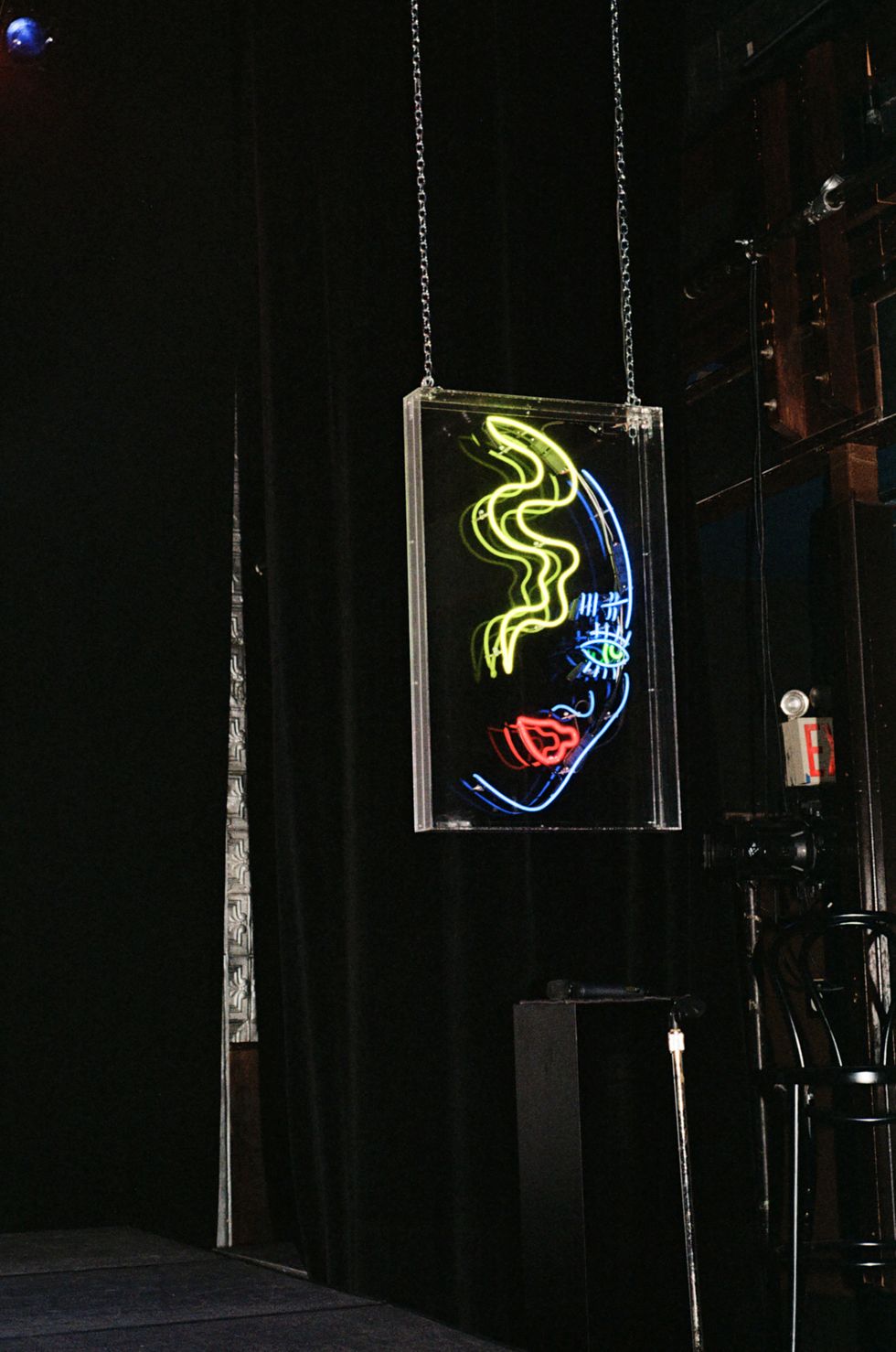
Performers: Sasha Velour, Glace Chase, Daphne Always, K. James, Zenobia, Neon Calypso, Miss Malice, Vigor Mortis, Elle McQueen and Untitled Queen
Photography: Matthew Wille
Story by: Joan Summers
Chief creative officer & CEO: Brian Calle
President: Jason Ve
Entertainment Editor: Joan Summers
Nightgowns is produced by Sasha Velour and House of Velour
Location courtesy of La MaMa
Special thanks to Robbie Manulani
From Your Site Articles
- Drag Superstar Sasha Velour Premieres 'One Dollar Drags' ›
- Theater Is Back and so Is Sasha Velour ›
- Sasha Velour Is in Her Author Era ›
Related Articles Around the Web
MORE ON PAPER
Entertainment
Rami Malek Is Certifiably Unserious
Story by Joan Summers / Photography by Adam Powell
Story by Joan Summers / Photography by Adam Powell
14 November
Music
Janelle Monáe, HalloQueen
Story by Ivan Guzman / Photography by Pol Kurucz/ Styling by Alexandra Mandelkorn/ Hair by Nikki Nelms/ Makeup by Sasha Glasser/ Nails by Juan Alvear/ Set design by Krystall Schott
Story by Ivan Guzman / Photography by Pol Kurucz/ Styling by Alexandra Mandelkorn/ Hair by Nikki Nelms/ Makeup by Sasha Glasser/ Nails by Juan Alvear/ Set design by Krystall Schott
27 October
Music
You Don’t Move Cardi B
Story by Erica Campbell / Photography by Jora Frantzis / Styling by Kollin Carter/ Hair by Tokyo Stylez/ Makeup by Erika LaPearl/ Nails by Coca Nguyen/ Set design by Allegra Peyton
Story by Erica Campbell / Photography by Jora Frantzis / Styling by Kollin Carter/ Hair by Tokyo Stylez/ Makeup by Erika LaPearl/ Nails by Coca Nguyen/ Set design by Allegra Peyton
14 October
Entertainment
Matthew McConaughey Found His Rhythm
Story by Joan Summers / Photography by Greg Swales / Styling by Angelina Cantu / Grooming by Kara Yoshimoto Bua
Story by Joan Summers / Photography by Greg Swales / Styling by Angelina Cantu / Grooming by Kara Yoshimoto Bua
30 September
Music
Demi Lovato Is No Joke
Story by Ivan Guzman / Photography by Jason Renaud / Styling by Chris Horan/ Makeup by Loftjet / Set design by Allegra Peyton
Story by Ivan Guzman / Photography by Jason Renaud / Styling by Chris Horan/ Makeup by Loftjet / Set design by Allegra Peyton
15 September
